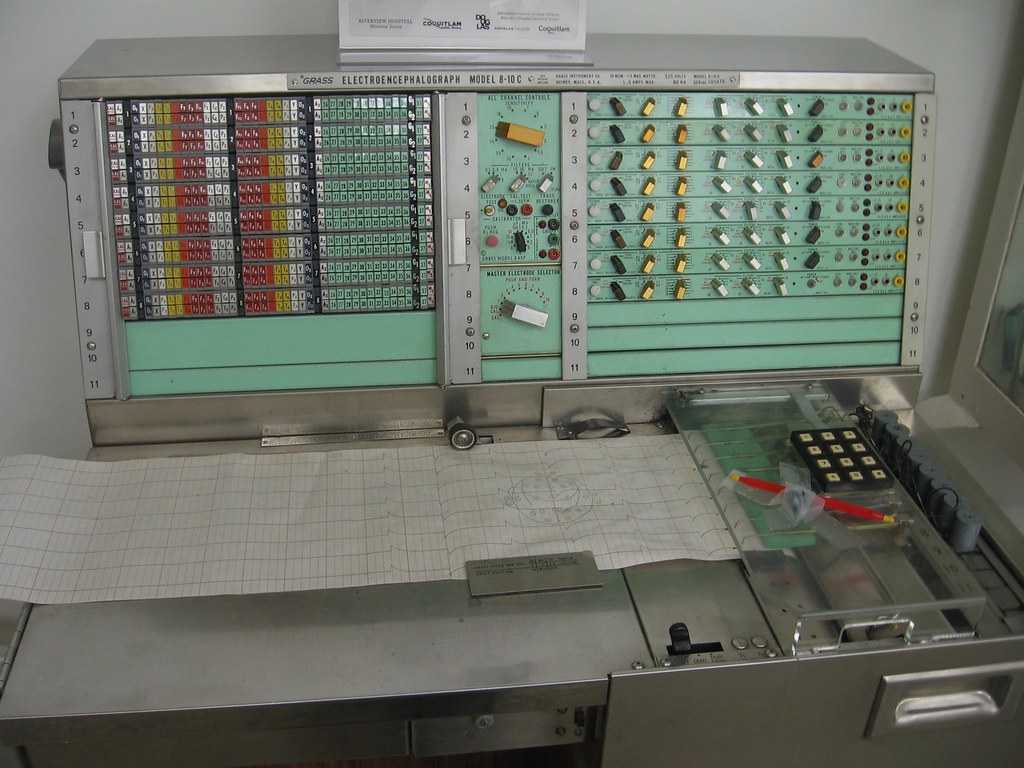Army officer Hans Berger could handle a horse. But even the best animal may rear in the face of a careening team-drawn cannon. Berger was thrown and barely escaped the trampling hooves and grinding wheels. His injuries were severe.
Within hours, Berger received a telegram from his father, physician Paul Berger, and his mother, Anna Berger (née Rückert). It was the first cable his parents had ever sent to their son. The message related that his older sister had felt an ominous premonition, and they were checking up on him.
The telegram astounded Berger. “It was a case of spontaneous telepathy in which at a time of mortal danger, and as I contemplated certain death,” he wrote, “I transmitted my thoughts, while my sister, who was particularly close to me, acted as the receiver.” Such ideas were not unheard of in 1892, but the nineteen-year-old’s next decision was something new. Do our brains somehow interact with the external world, he wondered? He committed his life to investigating the electrical activity of the cerebrum.
In 1924, Berger was the first to record electrical impulses generated by the human brain. But the method behind his invention, the electroencephalogram (EEG), remains something of a mystery. “One hundred years of research have passed by and still the human electroencephalogram (EEG) remains a puzzle to be solved,” suggests a team of neurologists with the Federal University of Parana, adding that it is difficult to overstate Berger’s “contribution to the field of modern neurophysiology.” Unlocking the enigma of the EEG’s creation reveals surprising clues about its inventor’s despair, obsessions, family, and fascination with the invisible world.
A native of Neuses near Coburg, Berger completed his military service and went to the University of Jena, in the German state of Thuringia. He earned a degree in medicine in 1897 and soon joined the university psychiatric clinic. By 1906 he was a senior lecturer; by 1912, physician-in-chief; by 1919, chair of psychiatry and neurology; and in 1927 he was elected rector of the university hospital.
During this time, he never stopped his intensive study of the human brain.
Berger published his findings on the EEG in 1929, suggesting that his technique could be used for psychiatric diagnosis and research. “The continuous nerve processes which take place in the brain,” he wrote, “represent . . . the contractions of the individual segments of the heart.” Because of this, he proposed, the psychological and the physiological are intrinsically linked: one cannot exist without the other; nor should one be reduced in favor of the other. His paper also touched upon a plethora of EEG phenomena, such as changes associated with attention and mental effort, or those related to cerebral trauma, particularly prefrontal cortex injury.
Berger’s electrical measurements and conclusions were startling. His research drew mockery from the scientific community. The instruments were dismissed as quackery. The hook-up (the electroencephalograph) was too complicated, they sniffed, the EEG record produced on film was pure gibberish.
Despite this initial resistance from his peers, Berger persisted. Twenty-three more papers on the subject would follow over the years. By 1934, independent testing established his discoveries as irrefutable fact. “The Berger rhythm is a reality,” declared Scientific American in 1938, “and immensely important.”
But long-term success eluded Berger. He was by nature a social conformist, reserved, reliable, and conservative in his views; the human brain was his main concern. However, he seems to have run afoul of the Nazi Party. In October, 1938, he was obliged to retire from his position as hospital director. This cruel blow was delivered via telephone.
Devastated, Berger accepted a position as head of a private sanatorium near Jena, in Bad Blankenburg. There he continued his work on what he considered to be the central problem of psychiatry: the physical basis of psychic function, or as he wrote, “the search for the correlation between objective activity in the brain and subjective psychic phenomena.”
Berger’s commitment to research alienated his associates even as they admired him. His rich private life of introspection, poetry, and impassioned journal entries were entirely separate from the driven professional seen in public. “He let nobody into the secret of his investigation,” wrote Berger’s colleague, Raphael Ginzberg. “What he achieved, he achieved by his individual effort.” Those efforts were dominated by a compulsion to perfect and establish the EEG. Yet he struggled under the shadow his forebears: his garrulous father was a popular and respected doctor; his grandfather was one of the most revered poets in Germany.
Berger never met his mother’s famous father, Friedrich Rückert, who died in 1866, but he felt the poet’s influence all of his life. Rückert also knew heartbreak and hardship. He lost his two youngest children to scarlet fever in 1833-34. “God has taken a piece of you,” the broken father wrote that spring. “Still, a part remains, left behind: may you prove worthy of it.” Berger saw in Rückert’s poetry the same connection to an invisible world that he felt. For decades, he kept a copy of one of his grandfather’s early quatrains on the wall in his study:
We each face an image: who we are meant to be. True peace eludes us until it is reality.
These four lines may be read as reprimand or comfort: a choice between I’ll never measure up; or, as the teacher of Ecclesiastes sees it, God has given human beings an awareness of eternity. Commenting on this passage, Søren Kierkegaard observed that this sense of the eternal assures us that immortality is not a future change occurring at the moment of death. “On the contrary,” he wrote, “it is a changelessness that is not altered by the passage of the years.” Put another way, peace is not found in pursuit of an image of ourselves as we think we ought to be, but in an awareness of the eternal present that is within us each moment. Berger, too, felt keenly this gap between his inner vision and the realities of daily life.
In 1940, he was nominated for the Nobel Prize. Of sixty-five total recommendations submitted to the selection committee, three named Berger. Future Nobel laureate Ulf von Euler, a renowned expert in neurotransmitters and physiology, supported Berger’s nomination, noting the widespread international acknowledgement of his EEG. That same year the awards were suspended as war raged across Europe and Asia. Berger had no idea that his name was being considered.
The following spring, Berger was misdiagnosed with an incurable heart condition. It was all too much. His country was at war; his lifelong career seemed ruined by political intrigue; and now he faced slow physical degeneration and death. He ended his life by hanging on June 1, 1941.
Twenty-first-century readers may condemn Berger’s final act or dismiss him as mentally unstable. Before rushing to judgment, we might pause to consider that his compulsions, expectations, limits, and desperations were his own. And yet from a life of heartbreak was borne the hope of millions.
My father suffered from heart disease. Thanks to an invention created one hundred years ago, Dad enjoyed decades of health that he might not have had otherwise. As I write, my father-in-law lingers on the brink of death. His life quite literally depends on accurate measurements of the electrical impulses of his heart by an electrocardiogram (ECG or EKG)—a direct descendant of the EEG. We’re not alone. Across the world, modern hospitals use technology based on Hans Berger’s genius to save lives every day.
Image via Flickr





